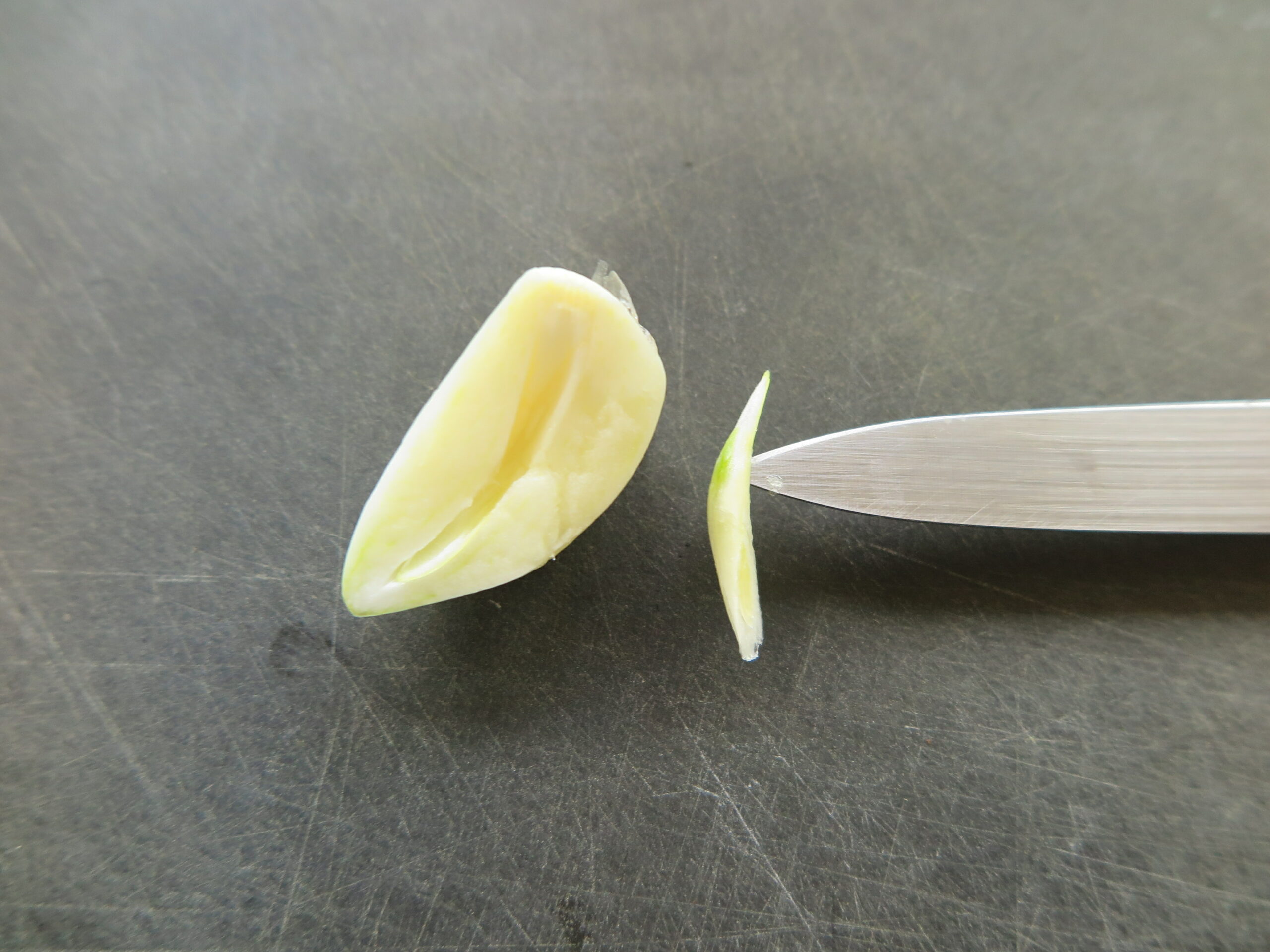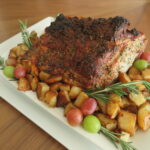Tuscany Pork Loin Roast with Roasted Potatoes
For the holidays (or any special occasion), I wanted to present something different than the usual standing rib roast or whole beef tenderloin. This bone-in pork roast presents as beautifully and is as juicy and moist as its beef rivals. It is a garlic lovers dream roast!I used a Berkshire heritage breed pork roast. You could call them the “Wagyu” pig on the farm. It’s a breed that can be traced back over 300 years to the farm pastures of England. Yes, they keep traceable records to enforce their legitimacy. The pork is prized for its marbling, tenderness and deep flavor. These pigs live the good life! They raise their young, enjoy indoor and outdoor space with room to frolic, never receive any antibiotics or hormones and enjoy a delicious vegetarian diet. Most pork is raised to be lean on large farms. Not these guys, they enjoy lots of delicious food and room to exercise on pesticide free small farms. If you don’t have access to heritage pork, you can still make an amazing, delicious roast.The potatoes are pre-browned on the stove top before adding them to the roasting pan one hour before it is done. Sautéing them to a golden brown gives them a head start, crispening the exterior further with the tasty pork juices in the roasting pan. You can eliminate the potatoes and enjoy the roast with whipped potatoes or pasta.
Ingredients
- 10 medium Garlic Cloves peeled, sprout removed, 2 ounce in weight
- ¼ cup Fresh Rosemary
- 2 teaspoons Coarse Ground Sea Salt
- 1 tablespoon Fresh Ground Pepper
- 2 tablespoons Olive Oil
- 5-6 pound Pork Loin Roast bone-in
- 3 large Russet Potatoes peeled and cut into 1 inch pieces, 3 pounds
- 3 tablespoons Olive Oil
Instructions
Getting the Roast Started:
- In a mini food processor or blender, mince garlic, rosemary, salt and pepper. Slowly add olive oil while continuing to process into a thick paste.
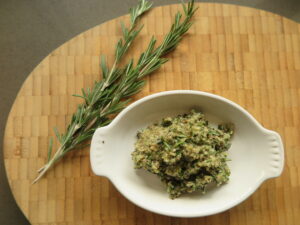
- Place the roast in a roasting pan, fat side up and bone side down. Rub the paste all over the meat (if you want a milder version, reduce the amount of paste you rub on the roast). Let stand for 2-3 hours at room temperature (or overnight in the refrigerator – let the roast return to room temperature before baking).
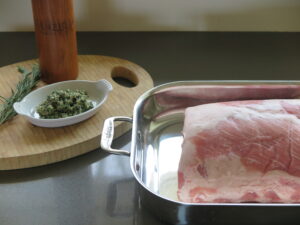
- Preheat oven to 350 degrees. Bake roast until it reaches an internal temperature of 100 degrees (approximately 1 hour and 20 minutes) in the center of the roast. While you are roasting, prepare the potatoes.
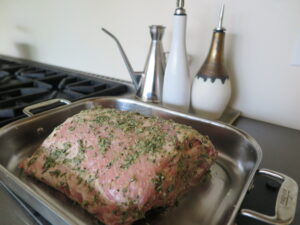
The Potatoes:
- You can do this in two batches or use 2 pans at the same time. In a large skillet heat 2 tablespoons of olive oil over medium heat. Add half the potatoes and season with salt and pepper. Cook, tossing occasionally, until potatoes are golden brown but still firm (10-15 minutes). Repeat using the other tablespoons of olive oil. Cover the potatoes with a screen to avoid spatters on your stove top.
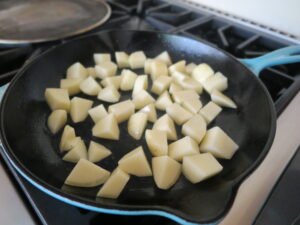
- Place browned potatoes in a shallow baking dish lined with paper towels. Set to the side.
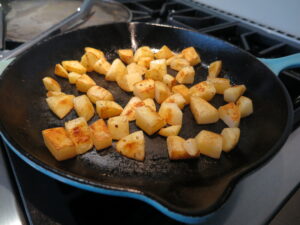
Finishing the Roast:
- Once the roast has reached 100 degrees, add the potatoes to the roasting pan. Toss potatoes to coat with pork juice. Return to the oven.
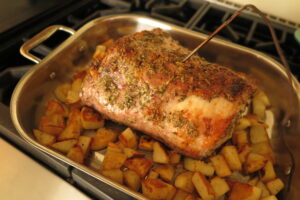
- When the pork has reached 125 degrees (approximately 25 minutes later), turn the oven temperature up to 400 degrees. Roast an additional 25-30 minutes longer until lightly browned. Your internal temperature should be 145 degrees.
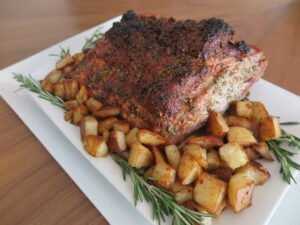
- Remove roast from oven and cover roast and potatoes with foil, letting them rest for 15 minutes. Your roast will increase temperature to 155 degrees while resting. Serve.
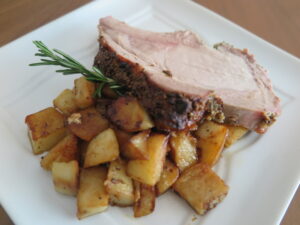
Notes
Note About the Garlic:
Garlic has a “germ” (a.k.a. sprout) in the middle of the clove. If your garlic clove is in season, there is no need to remove it. However, in the off season, we store garlic and with age this germ will make the flavor more pungent. It’s very easy to remove. Cut off the tough stem end. Then cut the garlic in half the long way. Using a paring knife, you can easily remove the germ.

